Mountain pine "Gnome": description, features of planting and care
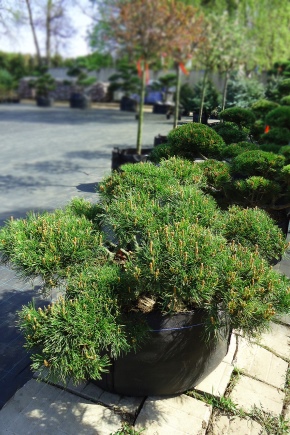
Evergreen conifers are one of the best options for creating a planned landscape with a minimum of time and effort for maintenance in the future. Mountain pine varieties are chosen by gardeners most often. Saplings tolerate transplanting well, they take root easier than others, a huge tree will not grow out of them, adult specimens are quite compact in size. Varieties of mountain pine differ in decorative properties, crown shape, color of needles, but all are characterized by a common feature - unpretentiousness to environmental conditions. Mountain pine can grow in all regions except the Far North. It is able to survive on mountain slopes up to 2500 m high, even on the most scanty soils. Let's consider one of the most popular varieties of mountain pine among gardeners - "Gnome".
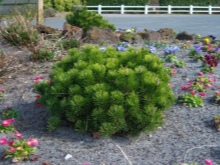
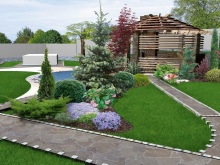
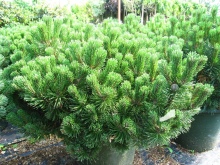
Description
This variety was bred in the Netherlands in 1890. Everyone knows that a gnome is a fabulous dwarf of small stature, hence the name of the variety. This is an evergreen, multi-stemmed dwarf shrub. It grows slowly, it grows by about 10 cm per year. In the first years, it mainly grows in width, then an active upward growth begins. By the age of 10, the bush will rise to 1 m in height and become about 1.5 m in diameter. The plant will reach its maximum height in only 40 years.
Propagated by "Gnome" seeds and cuttings. The seed method of breeding is considered the most acceptable and reliable, since the cuttings of conifers take root difficult, for a long time and often unsuccessfully. The root system adapts to environmental conditions: on light soils it grows deeper, on heavy stony soils it grows horizontally, close to the surface.
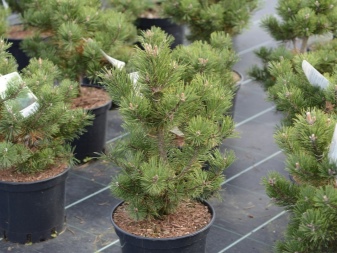
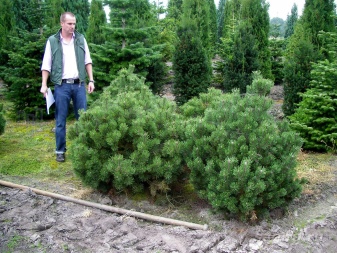
The dense crown of dense branches of young conifers "Gnome" is spherical, then grows into a dome-shaped one, if it is not purposefully formed into a given shape. Easily tolerates pruning, so you can easily form the most original crown shape according to the designer's idea. The needles are dark green, shiny, hard. Adult pines of this variety grow up to 2-2.5 m in height, 1.5-2 m in diameter. Mountain pines "Gnome" live for 150-200 years.

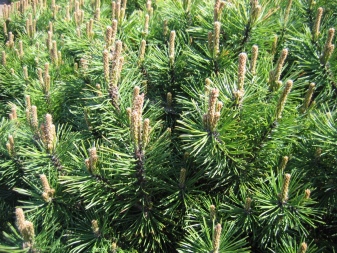
Landing features
Mountain pine "Gnome" grows best in a bright sunny place with good illumination. It can grow in partial shade, but the decorative effect of the ephedra will decrease. Pine is not very demanding on the substrate, it develops normally on any soil (acidic, alkaline, neutral, sandy, sandy loam, clayey, stony), but the best option is sandy and sandy loamy slightly acidic soil. Does not tolerate areas with stagnant moisture and high groundwater.
Most gardeners purchase planting material from specialized nurseries or garden centers., since it is painstaking and long to grow seedlings from seeds or cuttings on your own, and the result will not always please you with success.
The optimum age of the seedlings purchased from the garden center is 3-5 years. They take root well and are not so "baby" in size. The best planting dates are early May and early September.
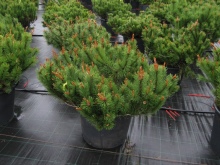
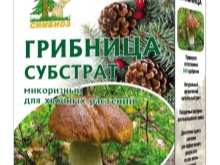
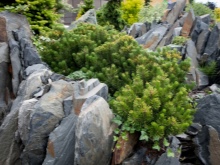
In the southern regions, autumn planting is recommended, and in mid-latitudes (Moscow region and north) it is better to plant in spring. An important condition is that the earthen lump on the roots when removing the seedling from the container should be preserved as much as possible, since the contact of the roots with open air is extremely undesirable: the symbiosis of the root system of the plant and the special microflora present on the roots is disrupted. This directly affects the survival rate of the seedling and can be detrimental to the plant.
For planting, a spacious pit is being prepared, 1.5-2 times larger than the size of the earthen coma. If you plan to create a "hedge" of several bushes, a trench is being prepared. When planting in a row, pines are planted at a distance of at least 1.5 m.In the garden center, you can buy a ready-made soil mixture special for conifers, you can prepare it yourself from turf soil, coarse sand and clay (2: 2: 1) with the addition of 1 handful of a complete mineral complex (nitrogen, phosphorus, potassium) for each plant. It is a good idea to bring a soil substrate from under the tree from a pine forest and mix it into the prepared soil, this is guaranteed to increase the survival rate of the seedling.

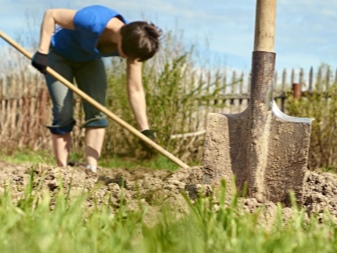
If the soil is heavy, it is necessary to lay a drainage layer of expanded clay, small pebbles, brick fragments (about 20 cm) on the bottom. It is worth pouring soil mixture onto the drainage so that, when planting, the root collar is slightly above the extreme level of the soil. The soil will gradually sag a little, and the root collar of the seedling will be at ground level. This is important as deepening is unacceptable. When planting, be sure to check this moment, "try on" the seedling and, if necessary, adjust the planting depth (add drainage or add soil).
The seedling is installed in the pit strictly vertically. It is more convenient to plant two together, so that someone supports the plant in the correct position, and someone evenly, from all sides, filled the planting hole, preventing voids and periodically compacting the earth. At the end of the procedure, the trunk circle is poured abundantly.
It is better to add water under the bush in small portions, wait a little until the next portion is absorbed, and add more so that the water does not spread from the plant, but is evenly absorbed under the roots.
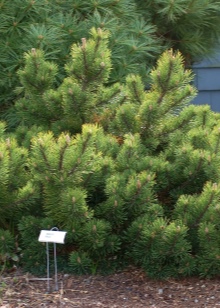
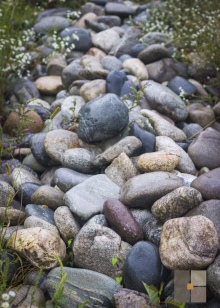
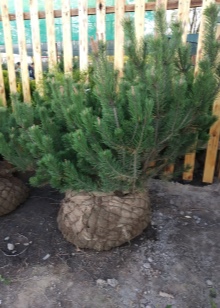
Care rules
If healthy seedlings were purchased, a suitable place was selected, and the planting in the ground was carried out correctly, then caring for the mountain pine "Gnome" will not cause much trouble. You will have to pay more attention to the tree in the first 2-3 years after planting. You need to properly organize the basic elements of care, and the tree will develop normally without "surprises". In the future, one-time procedures will be required as needed.
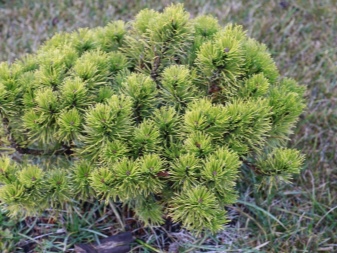
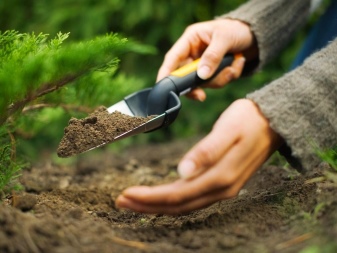
Watering
Immediately after planting, about 20 liters of water should be poured under the bush. Once a week for a month, you need to water the tree with 1 bucket of water so that the plant successfully adapts to open ground. You can irrigate the crown with a watering can to moisten the needles. Young pine trees need to be watered 3-4 times per season. Adult pines are drought-resistant and do not need watering, except in a particularly dry season or in very hot weather.
Usually, plants have enough seasonal precipitation, they retain moisture well under a thick layer of fallen needles, which should not be removed from the trunk circle.
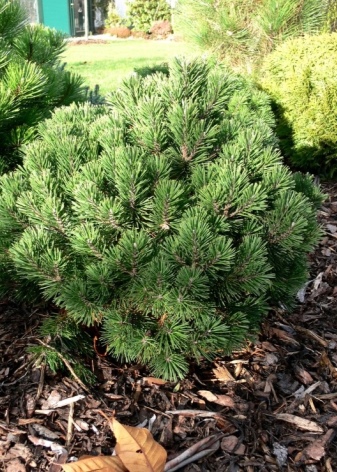

Loosening
For intensive air access to the roots in spring, when the soil warms up, it is necessary to loosen the surface layer of the soil shallowly (no more than 8 cm) without touching the roots. In the future, with strong soil compaction, light loosening is allowed no more than 1 time per month, preferably after watering or rain. Year after year, a layer of coniferous litter will accumulate under the bush, and loosening will not be needed.
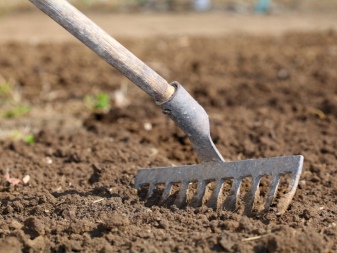

Top dressing
The first feeding is carried out in the next season after planting. Complex mineral fertilizers or special fertilizers intended for conifers are applied under young bushes. An aqueous solution is being prepared at the rate of 35-45 g of fertilizer per 1 sq. square meter. The nutrient solution is applied along the trunk circle only after abundant watering or heavy rain.
Adult pines do not need additional feeding, they provide themselves with additional food from the fallen coniferous litter.

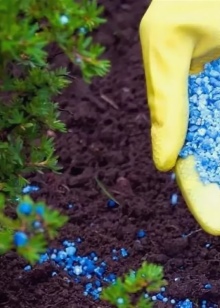

Pruning
This procedure is not obligatory for the mountain pine "Gnome" and is carried out at the request of the gardener to form a crown of a given shape or, if necessary, for sanitary purposes. It is not recommended to prune young pines in the first 2-3 years, so that they grow better and get stronger. The crown is formed by the annual pinching of young shoots ("candles"), shortening them by 2-7 cm.After pinching, several new branches grow at the cut site, the density and splendor of the crown increases, the decorativeness of the tree increases.
All tiers of branches should not be shortened at the same time. You need to know that you cannot cut the growths too low, as this can lead to deformation of the growth buds and stop their development.
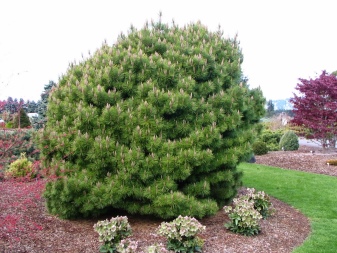
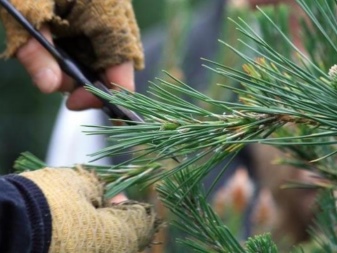
Preparing for winter
Mountain pine "Gnome" is a frost-resistant conifer variety. Pine has a unique feature - thickened bark at the butt of the trunk. Adult plants can easily tolerate frosts down to -35 degrees. But young bushes of the first years of life need shelter for the winter. Snow caps also pose a threat to fragile branches, which can break under the weight of snow. Plastic arches can be installed over the bushes and special agrotextile covers (sold in garden centers) can be put on them. It is possible to cover the trees with rare burlap, covering material, without arcs, sketch out coniferous spruce branches and tie the bushes with twine. In the spring, as soon as the ground thaws, it is necessary to remove the shelter in time in order to prevent the bushes from heating up and the development of fungal diseases.
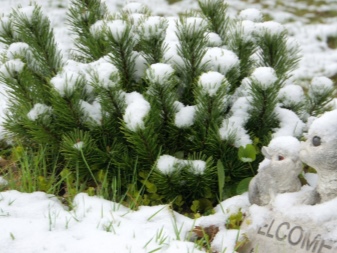
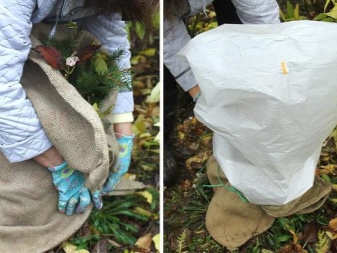
Disease prevention
The state of the plantings must be constantly monitored. The mountain pine "Dwarf" has few natural "enemies". These are fungal lesions: blister rust, Schütte's disease, bark necrosis. From the appearance of these diseases, the bushes are sprayed with fungicides and copper-containing preparations before wintering. (for example, a solution of copper sulfate). You can get rid of insect pests (aphids, sawflies, worms, spider mites) with folk remedies (collection by hand, soap solution, infusion of tobacco and insecticidal herbs), but modern allowed insecticides are much more effective (Karbofos, Decis, Actellik ").
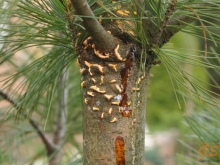

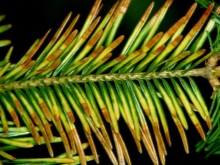
Use in landscape design
Nowadays, various creative solutions of phytodesigners are created from mountain pines: hedges, mixborders, rock gardens, rockeries, stony and heather gardens, container plantings in city parks and squares. Ideal "neighbors" of mountain pines are conifers of other species: spruce, thuja, juniper. Shrubs harmoniously fit into the stony structures of modern phytodesign - rockeries, enlivening the harsh beauty of stones with an evergreen crown.
Mountain pine without much trouble in growing can become one of the main decorations of the garden, successfully accentuate decorative deciduous and flowering perennials, saturate the surrounding air with the healing resinous aroma of essential oils and delight the owners of the site and their neighbors with the amazing beauty for many years.
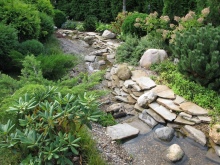

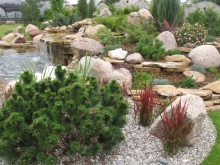
An overview of the mountain pine "Gnome" in the video below.



































































The comment was sent successfully.